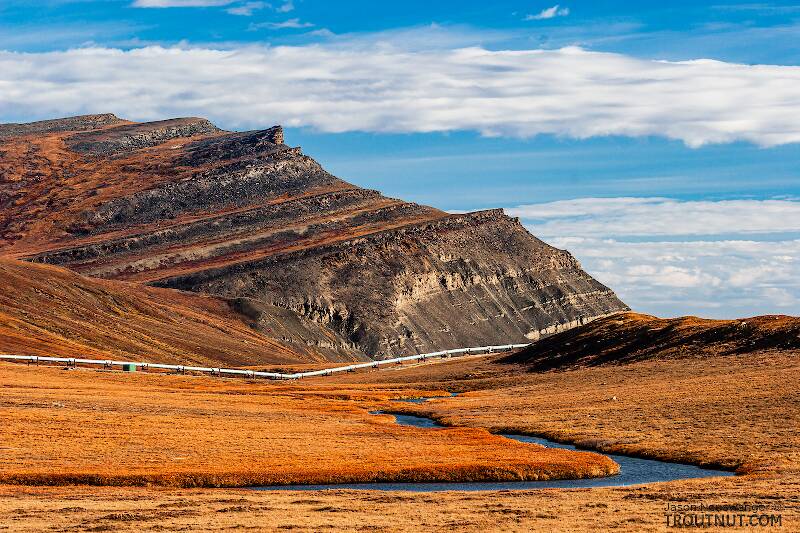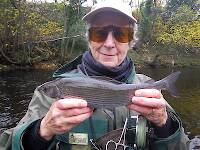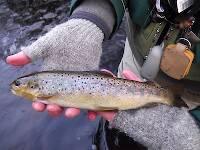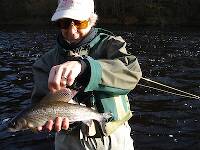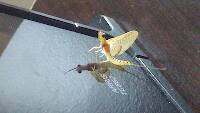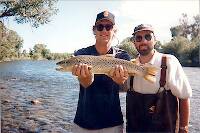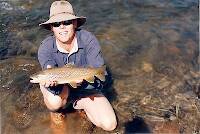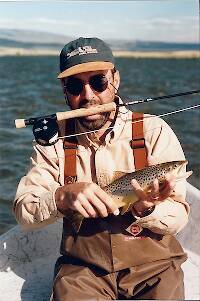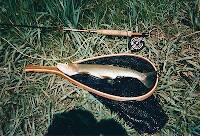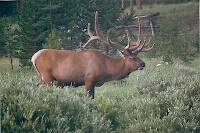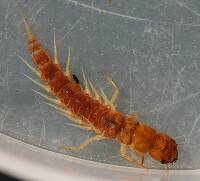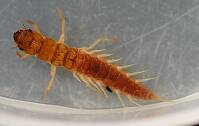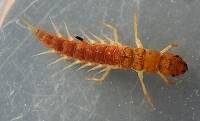
Blue-winged Olives
Baetis
Tiny Baetis mayflies are perhaps the most commonly encountered and imitated by anglers on all American trout streams due to their great abundance, widespread distribution, and trout-friendly emergence habits.
Featured on the forum

This one seems to lead to Couplet 35 of the Key to Genera of Perlodidae Nymphs and the genus Isoperla, but I'm skeptical that's correct based on the general look. I need to get it under the microscope to review several choices in the key, and it'll probably end up a different Perlodidae.

Troutnut is a project started in 2003 by salmonid ecologist Jason "Troutnut" Neuswanger to help anglers and
fly tyers unabashedly embrace the entomological side of the sport. Learn more about Troutnut or
support the project for an enhanced experience here.
TimCat on Mar 27, 2016March 27th, 2016, 7:48 pm EDT
So recently I watched "The Educated Trout" documentary, based off a book John Goddard and Brian Clarke wrote. The whole thing was pretty neat and had a lot of cool research shown. There was a part where they would look for lighter, triangular sections on the river bottom as an indicator for spotting trout. This was due to the trout holding in a particularly prime spot for long periods of time, constantly swimming against the current and brushing away sediments on the bottom. I would guess these spots are somewhere nice for both lighter currents and being a good lane for where food floats through. Brushing away the darker and larger rocks and pebbles revealed the finer, lighter sandy/chalky deposits beneath it, creating the lighter colored area on the bottom of the stream.
I thought this was a nice tip for spotting trout and a good thing to think about in general: indicators for where our friends are hanging out.
The chalk streams of britain may be the only areas where this applies(?), I'm new to this. I think michigan's sandier rivers might provide for a good habitat for this tip. Any other folks notice this working? Any other tips for knowing where to look would be appreciated too
I thought this was a nice tip for spotting trout and a good thing to think about in general: indicators for where our friends are hanging out.
The chalk streams of britain may be the only areas where this applies(?), I'm new to this. I think michigan's sandier rivers might provide for a good habitat for this tip. Any other folks notice this working? Any other tips for knowing where to look would be appreciated too
"If I'm not going to catch anything, then I 'd rather not catch anything on flies" - Bob Lawless
Wbranch on Mar 28, 2016March 28th, 2016, 5:07 am EDT
That technique for spotting trout in freestone rivers might not work very well since the material on the bottom of many freestone rivers isn't fine gravel, pebbles, or sand but much larger rocks and boulders. However there are many spring creeks and tailwaters in the US where the bottom material is sand, smaller pebbles and grass so it those waters it may very well work. I would think though one's success in locating those triangular sections would be dependent on how deep the river or stream is and/or how much higher you might be able to get so the angle at which you are looking into the water is much steeper to aid in peering into the water column. There are rivers I fish where there are high banks and if I sneak along those banks I can peer into the water and see many trout. But if I was already in the water, or at the waters edge, I would see far fewer trout holding in place.
Catskill fly fisher for fifty-five years.
TimCat on Mar 28, 2016March 28th, 2016, 5:31 pm EDT
Good point about the angle Wbranch. That is a huge factor for vision through the water.
"If I'm not going to catch anything, then I 'd rather not catch anything on flies" - Bob Lawless
Quick Reply
Related Discussions
Topic
Replies
Last Reply
1
Jun 12, 2010
by Jesse
by Jesse
0
Jan 21, 2017
by Mcflyangler
by Mcflyangler
4
May 10, 2012
by Shanti
by Shanti
1
Feb 2, 2017
by Mcflyangler
by Mcflyangler

